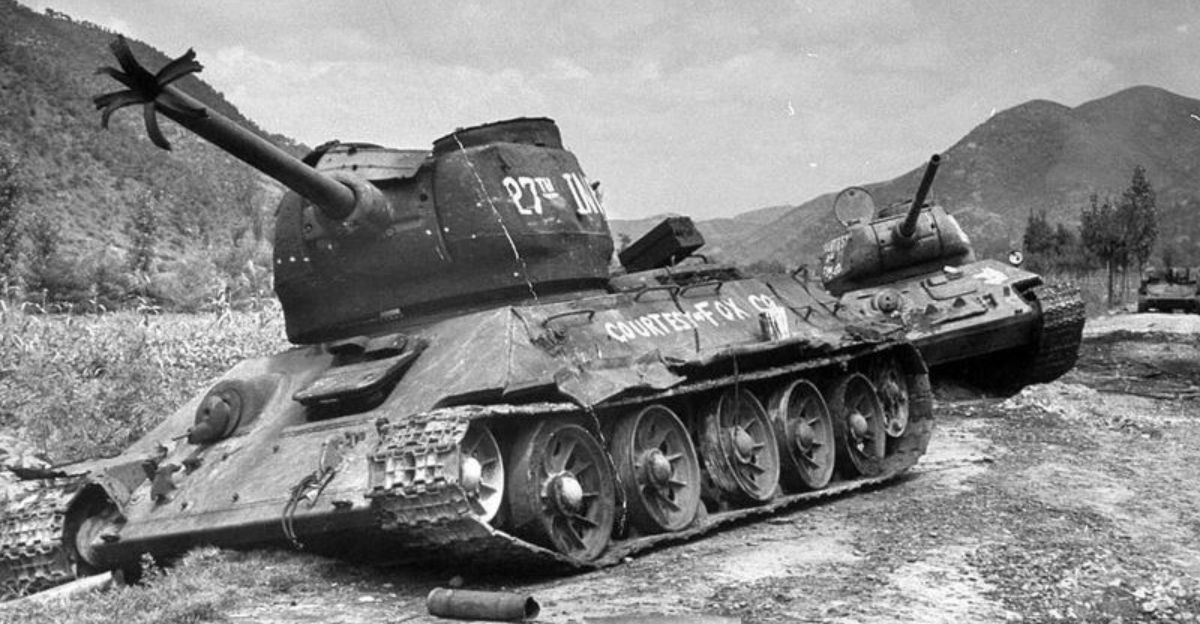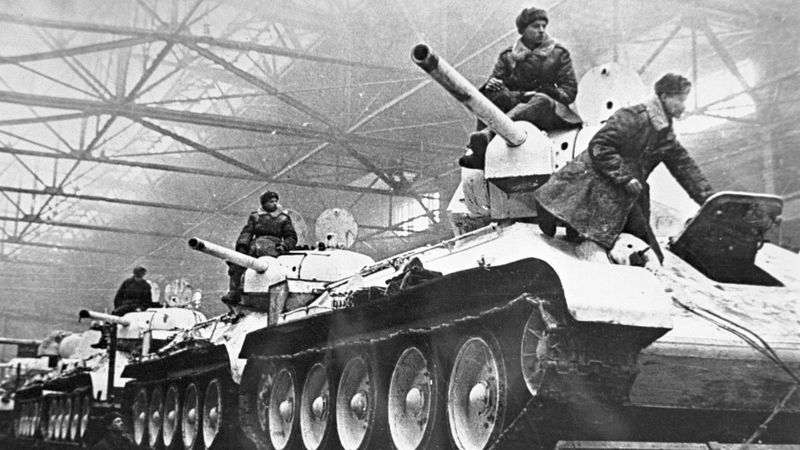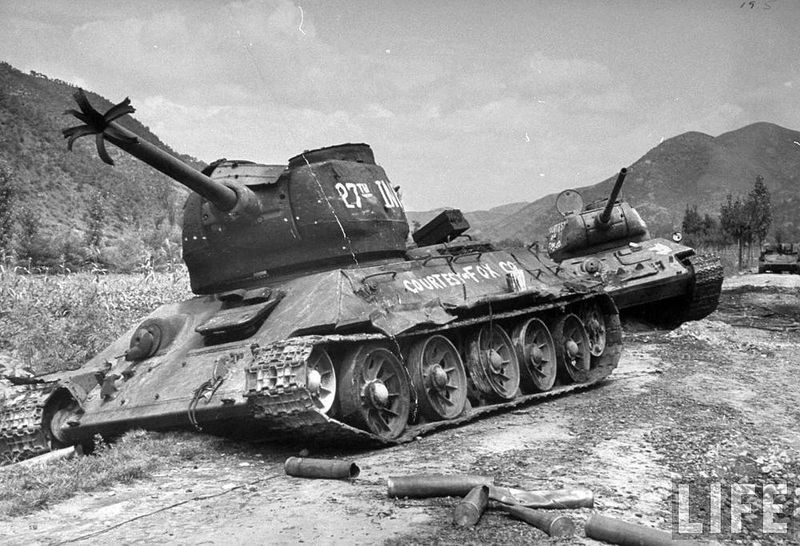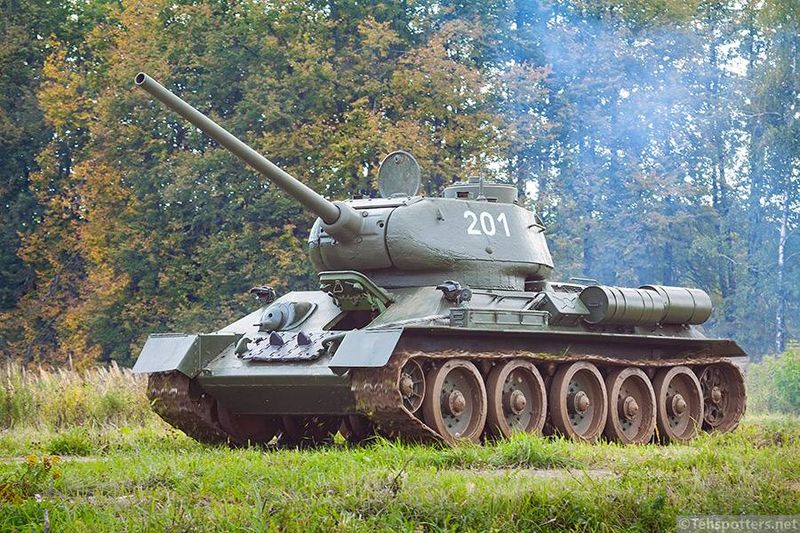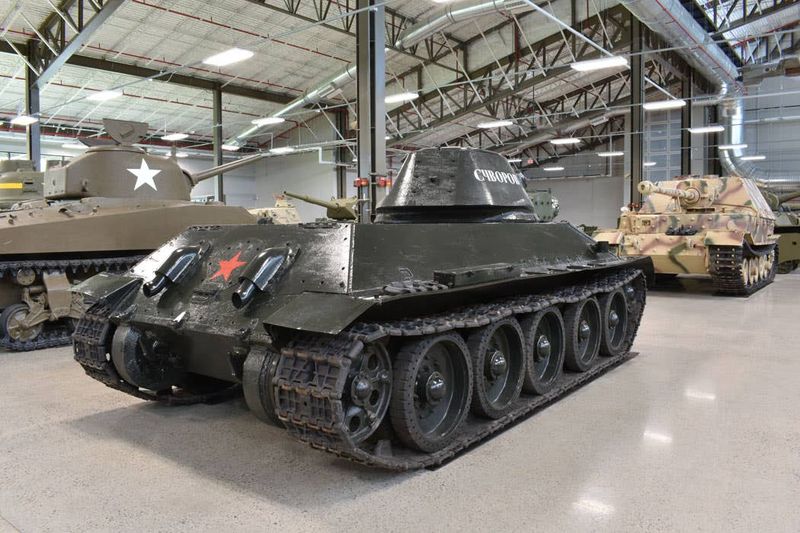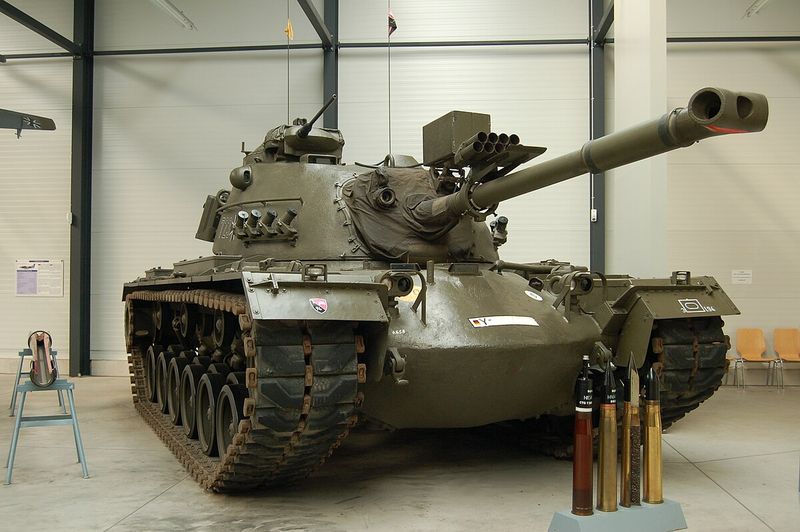During the Cold War, American military intelligence faced a crucial challenge: understanding Soviet tank technology. At the center of this quest was the legendary T-34, a tank so feared by German forces they nicknamed it the “Devil’s Chariot.” The story of how the United States managed to acquire and study this formidable weapon represents one of the most fascinating chapters in military history. Let’s look at how America managed to capture this iconic Soviet war machine.
1. The “Devil’s Chariot” – Soviet T-34 Tank
German soldiers trembled at the sight of the T-34 thundering across the battlefield. Its revolutionary sloped armor deflected shells that would pierce other tanks, while its wide tracks conquered the muddy Russian terrain that swallowed German vehicles whole.
Soviet engineers had created something remarkable – a perfect balance of firepower, protection, and mobility. The T-34’s 76mm gun could punch through most German armor, yet the tank remained fast enough to execute lightning maneuvers.
By 1943, this mechanical beast had become the backbone of Soviet armored forces. American intelligence officers recognized its significance immediately, knowing they needed to understand this weapon that was reshaping modern warfare.
2. How the U.S. Obtained a T-34
Fortune favored American forces during the Korean War’s chaotic early months. In September 1950, near Taejon, U.S. troops discovered an abandoned North Korean T-34/85 – the upgraded version of the legendary tank with its more powerful 85mm gun.
The prize was quickly secured and shipped back to American soil. Military transport planes carried the disassembled tank across the Pacific to Aberdeen Proving Ground in Maryland, where eager engineers awaited.
This wasn’t the only acquisition method. Some T-34s reached America through Lend-Lease arrangements, while others came via secretive channels involving Eastern European defectors and CIA operations that remain partially classified to this day.
3. Reverse Engineering & Testing
Aberdeen Proving Ground became the T-34’s new home as American technicians swarmed over every inch of the Soviet machine. They disassembled the engine, measured the armor thickness, and test-fired the main gun under controlled conditions.
The findings surprised many experts. While the T-34’s design showed brilliant simplicity, it also revealed significant flaws – crude welds, poor optics, and a punishing ride for its crew. Army engineers documented these discoveries in classified reports like “OTI Report No. 503.”
Test drivers pushed the captured tank to its limits on specialized courses. These evaluations helped American designers understand both the strengths to copy and the weaknesses to exploit in their own tank designs.
4. Where Is It Now?
The journey of America’s captured T-34s didn’t end with testing. Several examples found permanent homes in military museums across the country. The most famous specimen moved from Aberdeen to Fort Lee, Virginia, where it now resides at the National Armor and Cavalry Museum.
Other T-34s ended up in private collections. The Collings Foundation maintains a running example that occasionally rumbles to life at military vehicle demonstrations, giving modern Americans a glimpse of the machine that once struck fear into German hearts.
A handful of these historic vehicles serve as static displays at smaller museums and memorials, silent ambassadors from a conflict that shaped the modern world.
5. Why It Mattered
Knowledge gained from the captured T-34 directly influenced American tank design for decades. The M48 Patton tank incorporated lessons learned from studying the Soviet machine, particularly regarding armor angles and crew ergonomics.
More importantly, the intelligence gathered helped create effective anti-tank tactics. American forces now understood exactly what they might face in a potential conflict with Soviet-equipped armies.
The myth of Soviet invincibility crumbled under scientific scrutiny. While impressive, the T-34 had significant flaws that American engineers could exploit. This psychological advantage proved as valuable as any technical insight, giving Western forces confidence they could counter the Devil’s Chariot if Cold War tensions ever erupted into open conflict.
